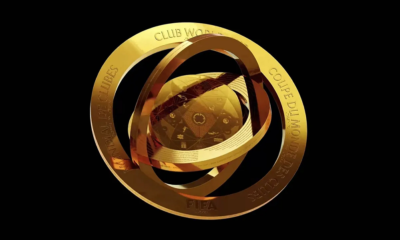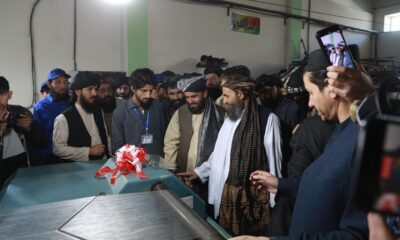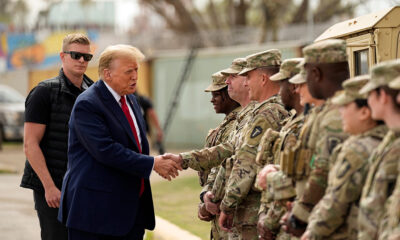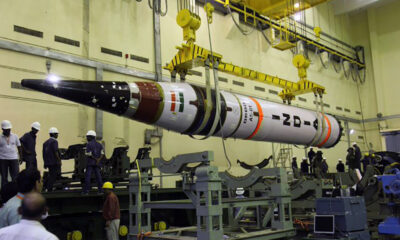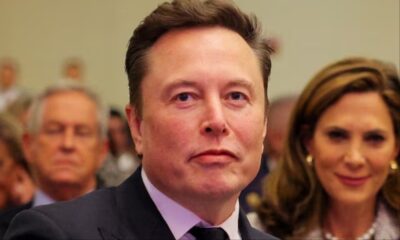World
N.Korea conducts longest-range missile test since 2017

Nuclear-armed North Korea conducted what would be its largest missile test since 2017 on Sunday, sending a suspected intermediate-range ballistic missile soaring into space and sparking condemnation from the United States and its allies.
South Korea's Joint Chiefs of Staff reported that a projectile believed to be a single ballistic missile was launched about 7:52 a.m. (2252 GMT) from North Korea's Jagang Province toward the ocean off its east coast.
South Korea's National Security Council (NSC), which convened a rare emergency meeting presided over by President Moon Jae-in, said the test involved an intermediate-range ballistic missile (IRBM), which North Korea has not tested since 2017.
Moon said that with the launch, North Korea was taking a step closer to fully scrapping a self-imposed moratorium on testing its longest-range intercontinental ballistic missiles (ICBMs).
He noted that this month's flurry of missile tests was reminiscent of the heightened tensions in 2017, when North Korea conducted multiple nuclear tests and launched its largest missiles, including some that flew over Japan.
North Korean leader Kim Jong Un has said he is no longer bound by that moratorium, which included a stop to nuclear weapons tests and was announced in 2018 amid a flurry of diplomacy and summits with then-U.S. President Donald Trump.
North Korea's rulers suggested this month they could restart those testing activities because the United States and its allies had shown no sign of dropping their "hostile policies."
"The United States condemns these actions and calls on (North Korea) to refrain from further destabilizing acts," the U.S. military's Indo-Pacific Command said in a statement after Sunday's launch.
BIGGER MISSILES
It is unclear if IRBMs were included in Kim's moratorium, but those, too, have not been tested since 2017.
South Korea's JCS and Japanese Chief Cabinet Secretary Hirokazu Matsuno separately said the missile is estimated to have reached an altitude of 2,000km and flown for 30 minutes to a distance of 800km. IRBMs typically have ranges of 600 to 3,500 miles, while ICBMs have ranges exceeding 3,500 miles.
Missile experts said the data could indicate a test of an IRBM such as the Hwasong-12, which was last tested in 2017, or a new type.
"Regardless of whether it’s a IRBM or ICBM, this is a strategic missile of some sort and clearly not the same as the prior tests in the January 2022 test series to date," George William Herbert, an adjunct professor at the Center for Nonproliferation Studies and a missile consultant, said on Twitter.
The launch could make January the busiest ever for North Korea's missile programme, which analysts say is expanding and developing new capabilities despite strict sanctions and United Nations Security Council resolutions that ban the country's ballistic missile tests.
Its latest launches included a test of two short-range ballistic missiles and their warheads on Thursday, and an updated long-range cruise missile system tested on Tuesday.
'RAMPING UP TESTS'
The test comes less than a week before the opening of the Winter Olympics in Beijing, which is North Korea's main political and economic partner. Pyongyang has said it would be skipping the Games because of the COVID-19 pandemic and "hostile forces."
"Kim seems to be ramping up tests in bid to pressure both Washington and Beijing over sanctions just ahead of the Olympics," said Uk Yang, research fellow at Center for Foreign Policy and National Security.
The tests would also appear to be the final nail in the coffin for Moon's last-ditch push for a peace deal with North Korea before he leaves office in May, Uk added.
"It's clear that North Korea is saying inter-Korean relations will need to start from scratch," he said.
In an address ahead of the New Year, Kim Jong Un called for bolstering the military with cutting-edge technology at a time when talks with South Korea and the United States have stalled.
Since then, North Korea has tested a dizzying array of weapon types, launch locations, and increasing sophistication as denuclearisation talks remain stalled.
Jagang Province was the site of two launches this month of what North Korea said was a "hypersonic missile," which could reach high speeds while flying and maneuvering at relatively low altitudes, but the ranges reported on Sunday were higher and farther than those earlier tests.
"The ballistic missile launch and the ones before it are a threat to our country, the region and the international community," Matsuno said. "This series of launches violate U.N. resolutions and we strongly protest this action by North Korea."
South Korea's NSC condemned the launch as a violation of the resolutions and a challenge to international peace efforts, using stronger language than previous tests, when it typically expressed "strong regret."
The tests appear aimed at modernizing North Korea's military, bolstering national pride ahead of several major North Korean holidays, and sending a message of strength as the country grapples with economic crises caused by sanctions and COVID-19 lockdowns, said Leif-Eric Easley, a professor of international studies at Ewha University in Seoul.
"The Kim regime hears external discussions of its domestic weaknesses and sees South Korea’s growing strength," he said. "So it wants to remind Washington and Seoul that trying to topple it would be too costly."
Kim visited a munitions factory last week, where he called for "an all-out drive" to produce "powerful cutting-edge arms," and its workers touted his devotion to "smashing ... the challenges of the U.S. imperialists and their vassal forces" seeking to violate their right to self-defence.
World
Zelenskiy says Ukraine must try to ensure war ends next year through diplomacy
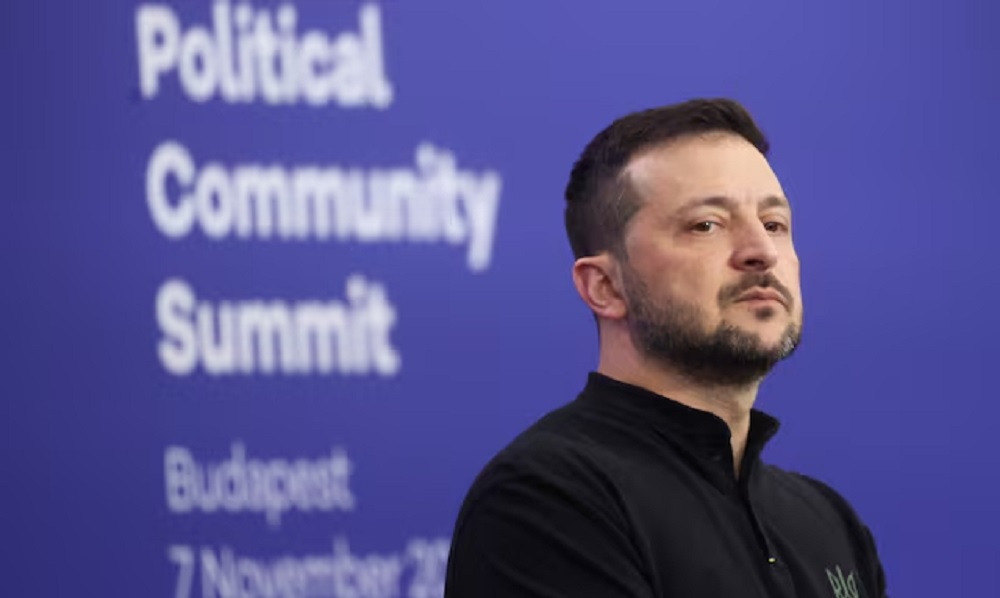
President Volodymyr Zelenskiy has said Ukraine must do all it can to ensure the war with Russia ends next year through diplomacy.
In a radio interview aired on Saturday, Zelenskiy conceded that the battlefield situation in eastern Ukraine was difficult and Russia was making advances. He said his Russian counterpart Vladimir Putin was not interested in agreeing to a peace deal.
Zelenskiy said U.S. legislation prevented him from meeting President-elect Donald Trump before his inauguration next January. The Ukrainian leader said he would only talk with Trump himself rather than any emissary or advisor.
"I, as the president of Ukraine, will only take seriously a conversation with the president of the United States of America, with all due respect to any entourage, to any people."
"From our side, we must do everything so that this war ends next year, ends through diplomatic means," Zelenskiy said.
World
Sri Lankan president’s coalition wins majority in general election
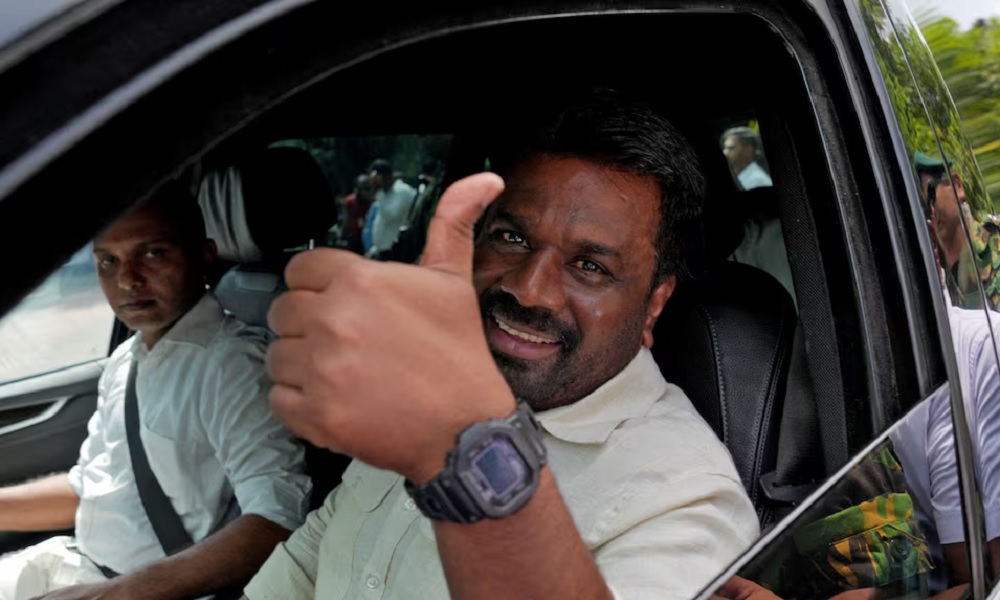
Sri Lankans handed Anura Kumara Dissanayake a thumping win in a snap general election, giving its new leftist president greater legislative power to pursue policies to alleviate poverty and fight graft as the country recovers from a financial meltdown.
Dissanayake, a political outsider in a country dominated by family parties for decades, comfortably won the island’s presidential election in September, Reuters reported.
But his Marxist-leaning coalition, the National People’s Power (NPP), had just three of parliament’s 225 seats before Thursday’s election, prompting him to dissolve it and seek a fresh mandate.
The NPP won 107 seats, receiving almost 62% or 6.8 million votes in Thursday’s election, putting them past the majority mark in the parliament, latest results on the Election Commission of Sri Lanka’s website showed. A two-third majority appeared within reach of the coalition.
Voters directly elect 196 members to parliament from 22 constituencies under a proportional representation system. The remaining 29 seats will be allocated according to the island-wide proportional vote obtained by each party.
“We see this as a critical turning point for Sri Lanka. We expect a mandate to form a strong parliament, and we are confident the people will give us this mandate,” Dissanayake said after casting his vote on Thursday.
“There is a change in Sri Lanka’s political culture that started in September, which must continue.”
Celebrations were largely muted, with the exception of a few NPP loyalists who lit fireworks in the outskirts of the capital, Colombo.
Just over 17 million Sri Lankans were eligible to elect lawmakers for a five-year term. A record 690 political parties and independent groups were contesting across 22 electoral districts.
Samagi Jana Balawegaya party of opposition leader Sajith Premadasa, the main challenger to Dissanayake’s coalition, won 28 seats and about 18% of the votes polled. The New Democratic Front, backed by previous President Ranil Wickremesinghe, won just three seats.
TENTATIVE ECONOMIC RECOVERY
Sri Lanka typically backs the president’s party in general elections, especially if voting is held soon after a presidential vote.
The president wields executive power but Dissanayake still requires a parliamentary majority to appoint a fully-fledged cabinet and deliver on key promises to cut taxes, support local businesses, and fight poverty.
He also has plans to abolish Sri Lanka’s contentious executive presidency but requires a two-third majority in parliament to implement it.
A nation of 22 million, Sri Lanka was crushed by a 2022 economic crisis triggered by a severe shortage of foreign currency that pushed it into a sovereign default and caused its economy to shrink by 7.3% in 2022 and 2.3% last year.
Boosted by a $2.9 billion bailout programme from the International Monetary Fund (IMF), the economy has begun a tentative recovery, but the high cost of living is still a critical issue for many, especially the poor.
Dissanayake also aims to tweak targets set by the IMF to rein in income tax and free up funds to invest in welfare for the millions hit hardest by the crisis.
But investors worry his desire to revisit the terms of the IMF bailout could delay future disbursements, making it harder for Sri Lanka to hit a key primary surplus target of 2.3% of GDP in 2025 set by the IMF.
World
Biden is sending aid to help Ukraine keep fighting next year, Blinken says
NATO countries must focus their efforts on ensuring that Ukraine has the money, munitions and mobilized forces to fight effectively in 2025, Blinken said
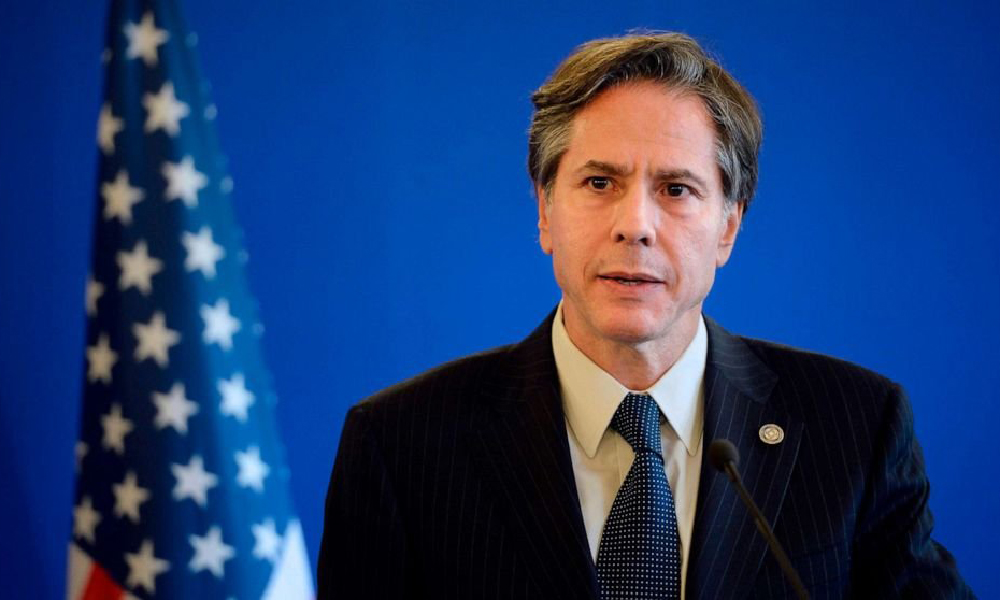
The Biden administration is determined in its final months to help ensure that Ukraine can keep fighting off Russia’s full-scale invasion next year, sending it as much aid as possible so that it might hold Russian forces at bay and possess a strong hand in any potential peace negotiations, US Secretary of State Antony Blinken said Wednesday.
“President Biden has committed to making sure that every dollar we have at our disposal will be pushed out the door between now and Jan. 20,” when president-elect Donald Trump is due to be sworn in, Blinken said.
NATO countries must focus their efforts on “ensuring that Ukraine has the money, munitions and mobilized forces to fight effectively in 2025, or to be able to negotiate a peace from a position of strength,” Blinken said during a visit to Brussels.
The US will “adapt and adjust” with the latest equipment it is sending, Blinken said, without providing details.
The almost three-year war has shown no signs of winding down.
Russia attacked the Ukrainian capital Kyiv with a sophisticated combination of missiles and drones for the first time in 73 days on Wednesday.
That came a day after the Pentagon said most of the North Korean troops sent to help Moscow’s war effort are fighting to drive Ukraine’s army off Russian soil in the Kursk border region.
-
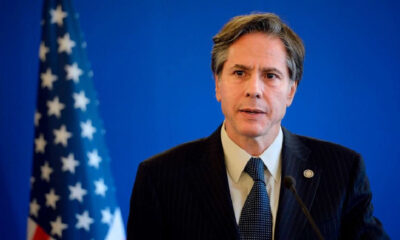
 World4 days ago
World4 days agoBiden is sending aid to help Ukraine keep fighting next year, Blinken says
-
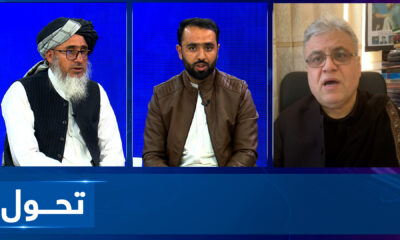
 Tahawol4 days ago
Tahawol4 days agoTahawol: NATO’s concern over proximity of Russia & North Korea discussed
-
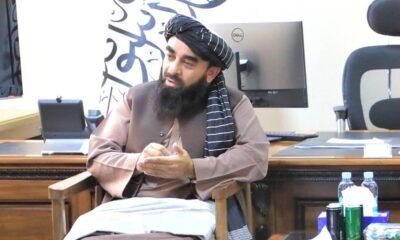
 Latest News4 days ago
Latest News4 days agoIEA committed to freedom of media within Islamic principles: Mujahid
-
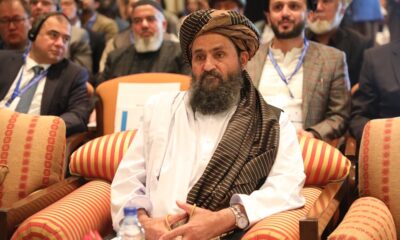
 Latest News4 days ago
Latest News4 days agoIEA prioritizing poverty reduction and job opportunities, says deputy PM
-

 4 days ago
4 days agoAWCC customer in Kandahar wins 1 million AFN in ‘lucky lottery’
-

 Latest News4 days ago
Latest News4 days agoIEA cuts mobile phone and internet rates
-
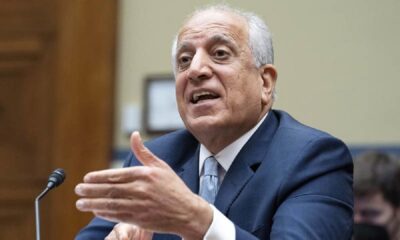
 Latest News4 days ago
Latest News4 days agoKhalilzad: Turning our back on Afghanistan would not be wise
-
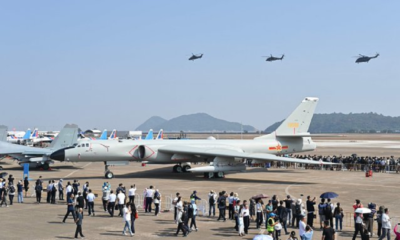
 World5 days ago
World5 days agoChina’s largest air show off to flying start with fighter jets and attack drones


